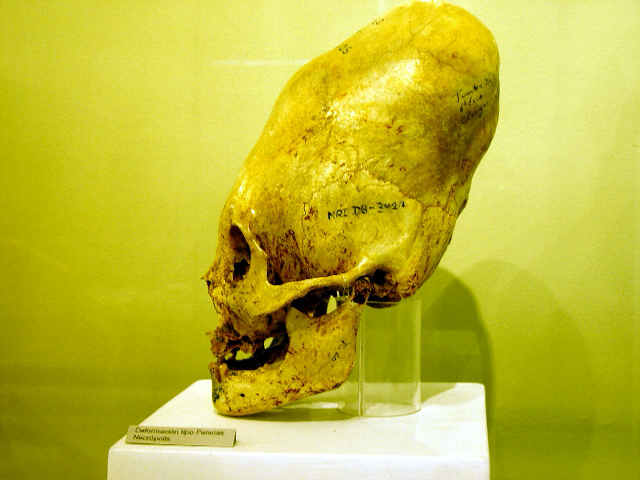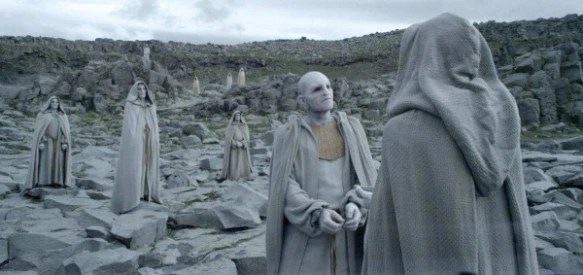
I just watched a rather disturbing YouTube video claiming that American and other Western servicemen in Afghanistan had witnessed, if not fought and killed, actual giants hiding up in the mountains of that forbidden country!
By Emad Aysha
It seems outlandish and overly convenient if you ask me, mainly since the thesis is used to explain why Afghanistan was never conquered in its history – even though the Americans apparently killed one with machine gun fire.
And the Muslims conquered the country. The descriptions of the beasts also dovetail too much with Biblical descriptions of giants having six figures. So, I chalked it down to wishful thinking.
Cultures all over the world are full of legends of giants. For instance, the Titans, for the ancient Greeks, were the first generation of gods and, more specifically, the ones who taught man the secret of fire.
Cultures often have accounts of an older, more advanced or at least more powerful race that they learn from. But I said to myself, with some confidence, that this wasn’t true of us Muslims with our rather bland Arabic imagination.
Then I realised I was wrong. The Amaleeq (عماليق) mentioned in the Quran in Canaan overlapped with what the YouTube video said about the Israelites up against Goliath and other tribes and kingdoms of giants in the Levant.

SCI-FI GIANTS: A deleted scene from 'Prometheus' (2012). You can tell these guys are modelled on Druids from Stonehenge fame. Shame the movie was not nearly as histrionic.
I’d actually watched a religious programme once, with the former mufti Dr. Ali Gumma claiming that Umar bin Al-Khattab was an imlaaq himself—the word literally means ‘giant’ in Arabic.
At the time, I put that down to wishful thinking, too, but the Afghanistan giants in question were 10 to 13 feet tall, so they were not of the Jack and the Beanstalk variety. And why do so many cultures have giants in their collective memories?
Quranic scholars and historians in Islamic history have variously interpreted the word (عماليق) in often non-literal terms, claiming it as just a tribal name derived from the founder of the bloodline who coincidentally had the name Imlaaq.
Isaac Asimov once discussed this concept in the Bible and how the Hebrews were overwhelmed by the Canaanites' cities, insisting that giants must have built these places while they were, figuratively speaking, no more than mere grasshoppers or locusts.
Some Hebrew scholars have interpreted the word giant literally, while others haven’t. At the outset of the Muslim conquests, the Romans also described the Arabs as locusts - no more than pests.
But something about the term still nagged me. Then, I chanced upon a famous Egyptian talk show that revealed that one account said this mysterious tribe was none other than the Hyksos.
That made more sense. There are ‘accounts’ in Arabic history of the Hyksos founding Yathrib, what is today Madinah. They were a loose coalition of nomadic Semitic tribes who were able to overwhelm ancient Egypt.
Hence, the word Hyksos means sphered kings. But what of their size? Biblical mythology has giants being hybrid beings, the Nephilim, a cross between man and some divine entities.
There’s also the Biblical overlap with Babylonian mythology and the Anunnaki species of gods, so beloved by ancient alien theorists. (Please see Billy Carson on Atlantis and Paul Wallis on Star Children; I have no comments, yet.)
Well, in the ancient world, people considered emperors and heroes to be gods, so the Semites may have just seen a remarkable tribe of people who looked sufficiently different racially from them to seem alien to them.
The notion that Umar bin Al-Khattab was a Hyksos made sense to me since his job, before Islam, was to settle disputes between individuals and clans, one of the muhakimeen (محكمين).
In Arab tradition and many tribal cultures, you hire a foreigner to adjudicate, which guarantees he’s a neutral party that won’t lean towards one group over another. (Hence the myth of America as a ‘neutral arbiter’ between the Israelis and Palestinians).
As for size, Umar was certainly physically ‘big’ and a fierce warrior. In the olden days, size was tied up with the tribe you came from because people mostly married within their limited communities. So, to Arabs, he would look like a giant and seem of a different race, while in reality an Arabised Semite like them.
From a biological standpoint, these so-called giants could have been an inbred subspecies of man. Pigmies, for instance, have become so inbred that they are tiny and can’t interbreed anymore with regular human beings.
There’s also a famous isolated tribe in Africa with only two toes. (Pandas have six fingers, one of which is an opposable thumb.) The Quran also contains other controversial verses about magic in Babylon (2:102).
Angels and devils taught man good and evil magic variants, with the most apt pupil being the Prophet Solomon (PBUH) and his incredible kingdom. Again, a Babylonian connection.

FACTUAL MYTHS: The Wendol queen from 'The 13th Warrior' (1999). They miscast Antonio Banderas as Ibn Fadlan, and it seems they miscast the Berserkers as Neanderthals too.
It seems that with time, the term Annuki in the Bible took on another usage, meaning elites and sky people, which I think means worshipers of sky gods. There are parallels in Arabic, too, with the Wendol (or Vandals) being classed as Tartars, not genetically but as a generic label for Eurasian barbarians.
There’s another cultural linkup for you – the Wendol in Michael Crichton’s Eaters of the Dead. He thought they were old Neanderthals cannibalising modern man, but ‘I’ know better since his story comes out of the Ibn Fadlan manuscript, most likely set in Russia, not Scandinavia.
I would like to believe there are giants in modern-day Afghanistan, but I’m suspicious of anything an occupying force says – black propaganda. The past concerns me and our shared myths and race memory.
Maybe we did learn fire from a prehistoric ancestor that has sadly departed. And it’s up to the rest of us to make sure we don’t follow him in his oversized strides!






